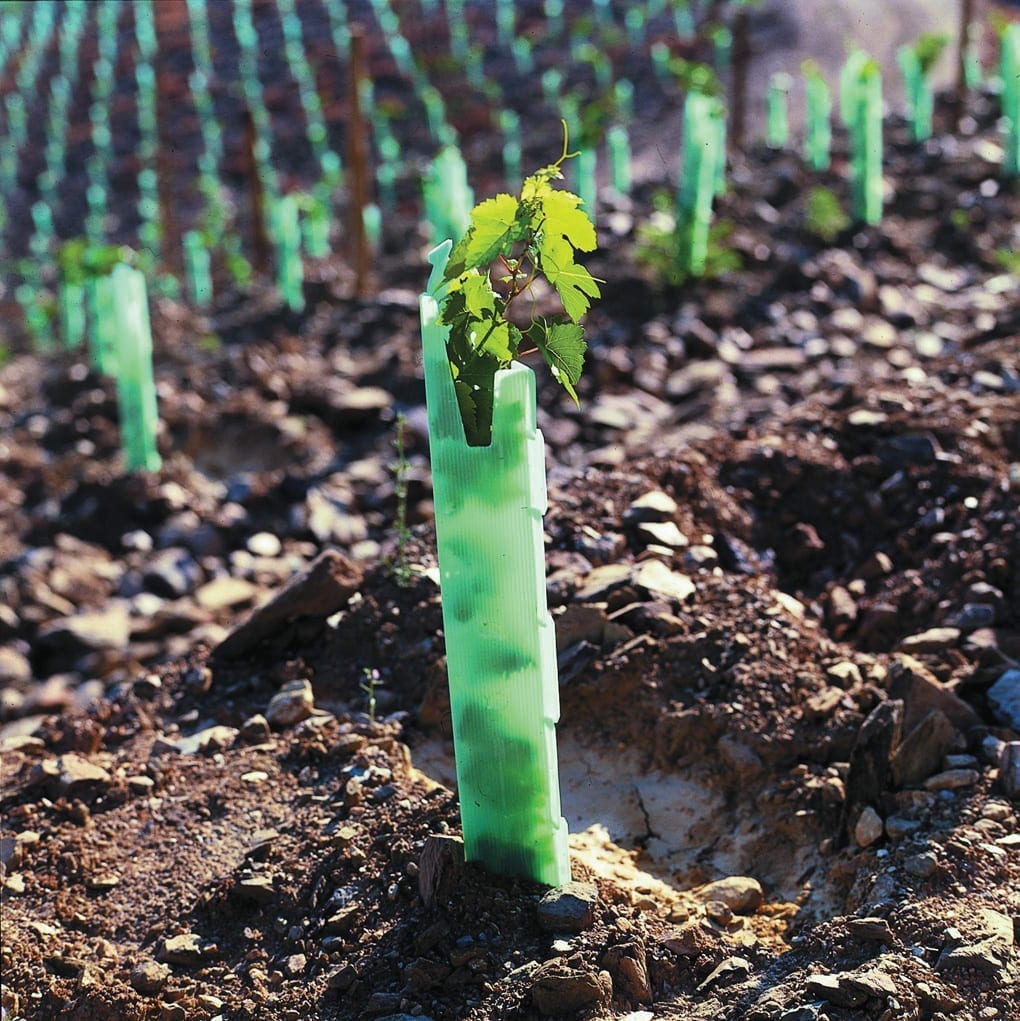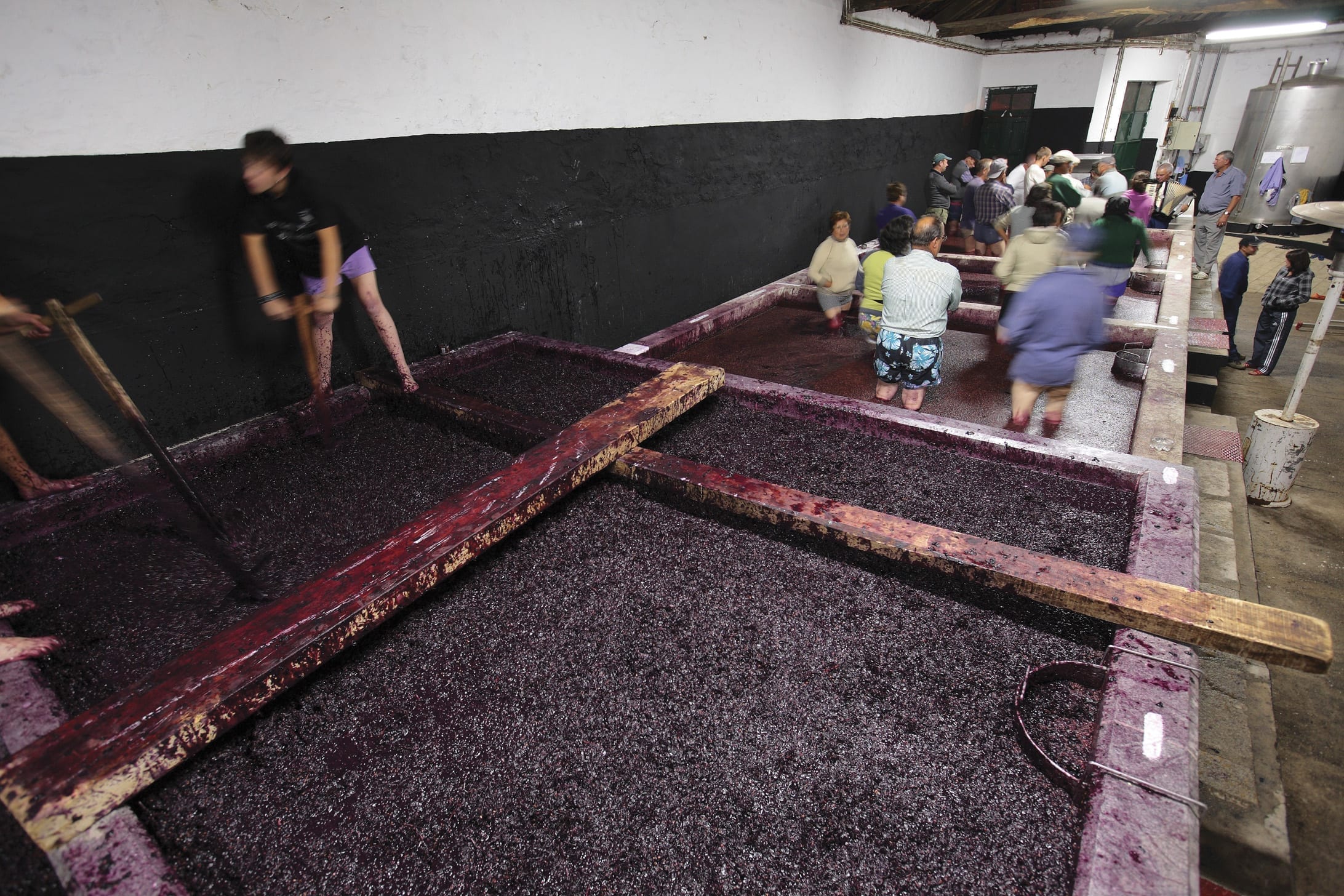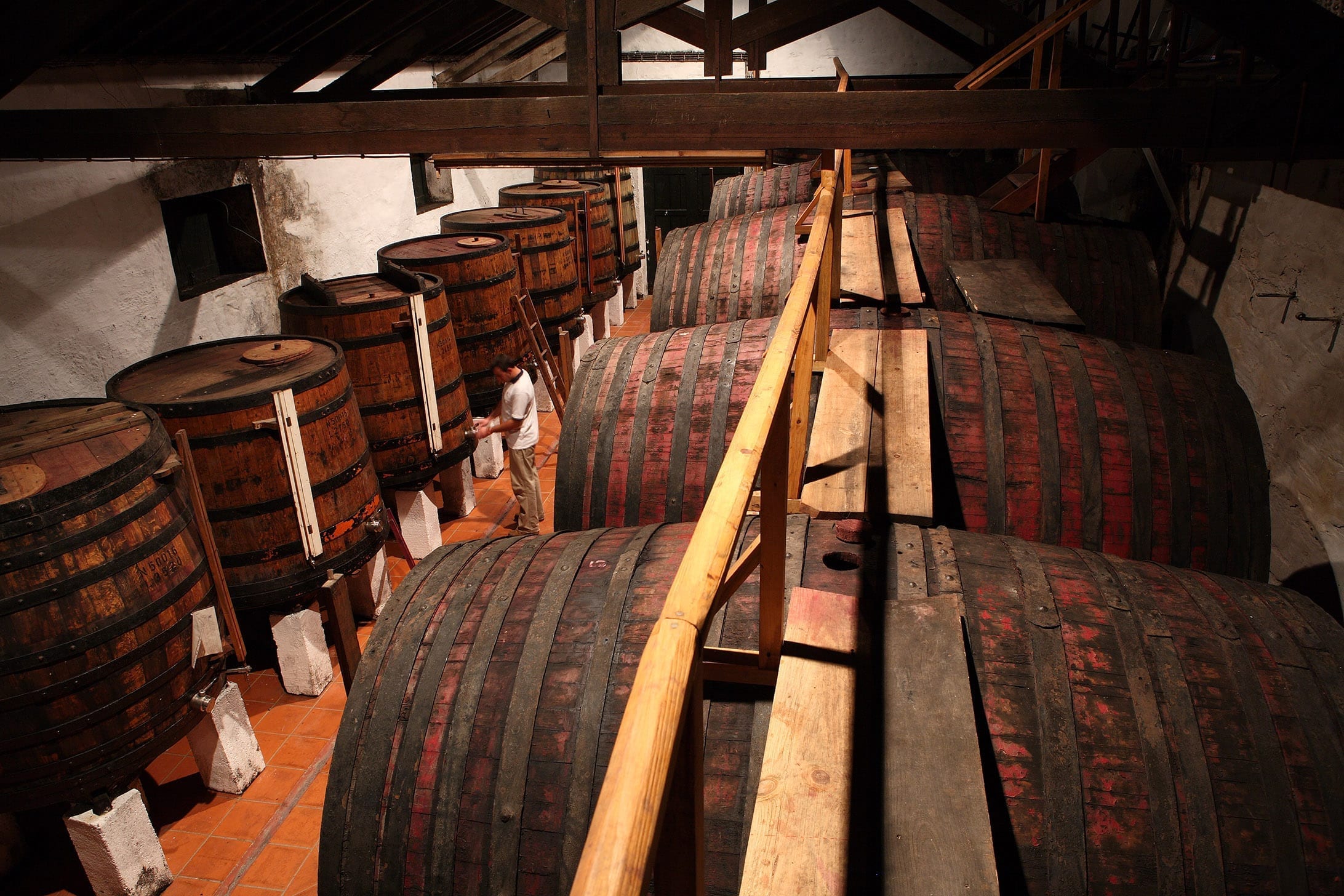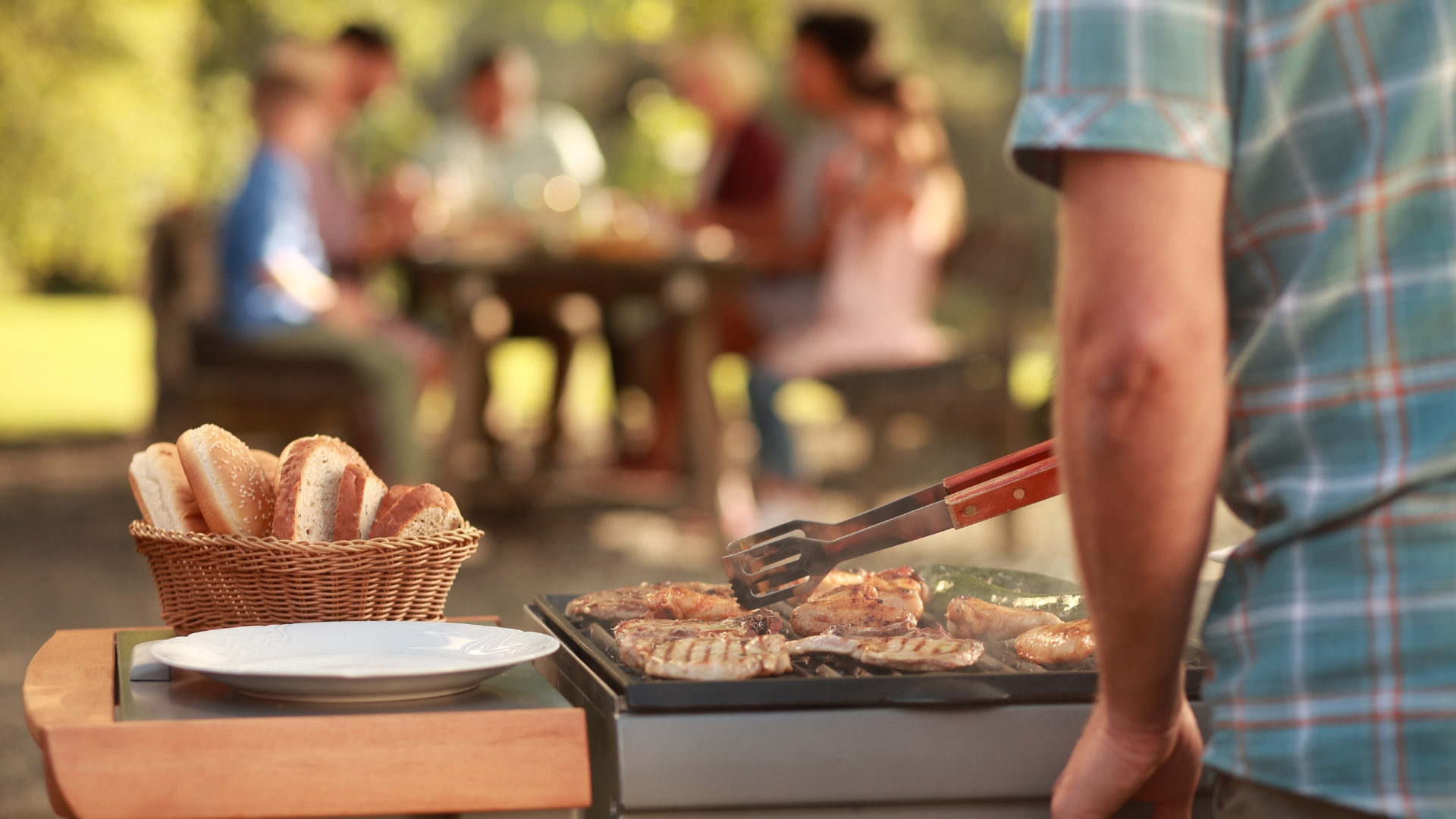Reprinted with permission from Red Wine: The Comprehensive Guide To The 50 Essential Varieties & Styles by Kevin Zraly, Mike DeSimone & Jeff Jenssen, Sterling Epicure, 2017.
The Life Cycle of Port
In the Vineyard
In winter months, workers prune vines by hand to coax the correct number of grape bunches to grow the following summer. Farmers who don’t use herbicides weed at this time also. In February come fertilizer and replanting. In March, workers lay out the training wires and posts as well as graft new vines onto rootstock. April brings growth for both the vines and the surrounding grass, which prevents erosion but also must not compete with the vines. Flowering begins in May, followed by continuously hand-tying new growth to the wires.

By June, clusters of hard, green berries are hiding under the thick, lush leaves. Workers cull the excess grapes—now the size of black-eyed peas—in July. Their color changes in a process known as veraison, which marks the beginning of ripening. Come August, the grapes have stopped growing, but they continue to ripen, increasing their sugars, tannins, acids, and pigments, all vital components for the final wine.
In the Cellar
Mid to late September brings the harvest. Workers pick the grapes and place them in flat, shallow containers so as not to crush the skins prematurely. A gentle crush takes place in the winery before the grapes go into shallow granite tanks, or lagares. Villagers, migrant workers, winemakers, wine writers, college students, and field hands alike roll up their pants, wash their feet, and jump into the tanks to crush grapes to the sounds of accordions and drums. The smell of yeast and sweet grapes fills the air as the crushed grapes warm underfoot, marking the start of the fermentation process. That process can last as little as forty-eight hours, as opposed to the week or ten days it lasts for dry wines, but a high level of maceration during that short time must extract a great deal of flavor, color, and tannin from the grape skins. That’s why wineries have used foot crushing for centuries; only recently has mechanization taken over to simulate this effect.

At the precise moment when the yeasts have converted half of the grapes’ sugars into alcohol, the winemaker adds neutral brandy, or aguardente, to halt fermentation, giving Port its characteristic voluptuous sweetness.
The Differences between Ruby and Tawny Ports
Different varieties of grapes either co-ferment or become finished wines blended together to make the different styles of Port:
RUBY-STYLE PORTS include Ruby, Reserve, Late Bottled Vintage, and Vintage versions. Ruby—the youngest and most fruit-forward of the family—usually consists of blends of a few different vintages and age two or three years before bottling. Reserve Rubies come from premium grapes and generally age for three to five years. Late Bottled Vintage (LBV) Ports come from a single harvest year and age for four to six years before bottling. Vintners make Vintage Ports from the best wines from a single, exceptional harvest. They age in wood for approximately two years prior to bottling and will continue aging in the bottle for many more years. Vintage Ports come only from “declared” years. (Each producer declares a vintage year.) Enjoy Ruby and Reserve Ports while you wait for your LBV and Vintage Ports to age. All of them make excellent dessert wines and can accompany a variety of cuisines.
TAWNY PORTS have aged in either vats or barrels. They pick up their tawny color (yellowish brown) and oxidative character from time and wood. The four types of Tawny Port are Tawny, Tawny Reserve, Tawny with an age indication (10, 20, 30, 40 years old), and Colheita. Only Colheita must come from a single vintage, and it also must age in wood for at least seven years. The other three types may contain a blend of different vintages. Long barrel aging gives aged Tawnies remarkable complexity.
Port Recommendations
See below for a selection of Port wines as recommended by the authors:
Bargain ($20 or less)
Jeff: Fonseca Bin 27 Porto, Croft Fine Ruby
Value ($21 to $40)
Kevin: Fonseca 10-Year-Old Tawny, Taylor Fladgate Late Bottled Vintage
Special Occasion ($41 to $99)
Kevin: Taylor Fladgate Porto Vintage Quinta de Vargellas
Splurge ($100 and up)
Mike: Taylor Fladgate Scion 1855 Vintage Tawny




